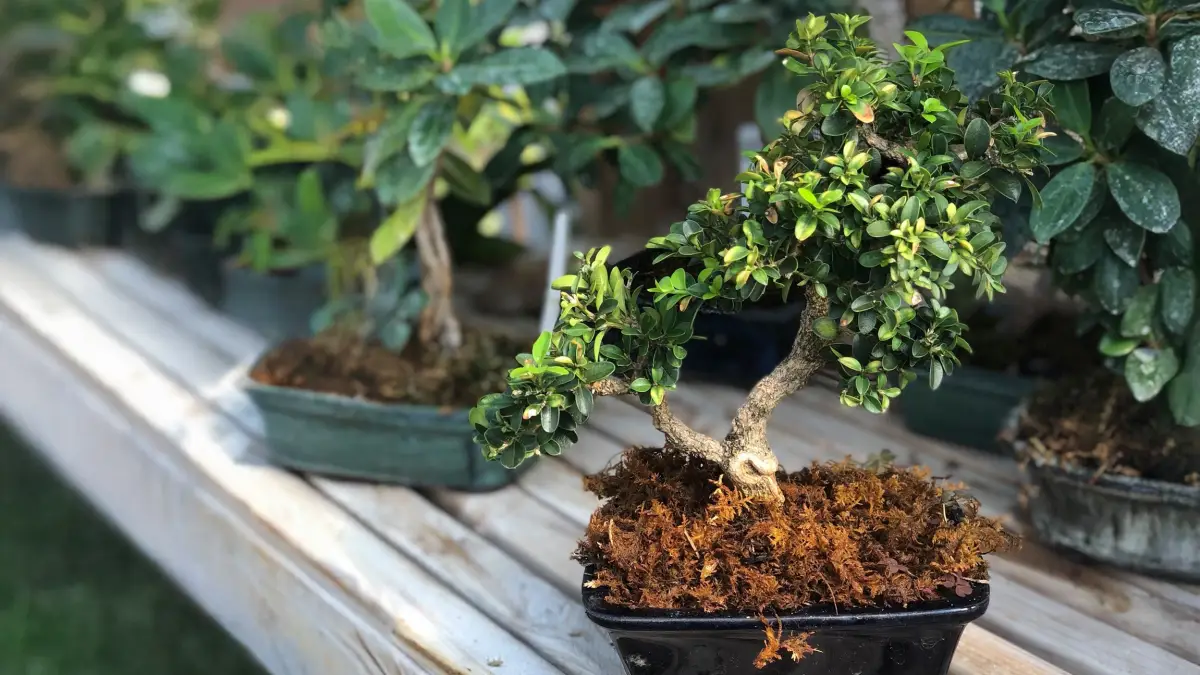Bonsai Basics: Cultivating Miniature Trees Indoors

Cultivating bonsai trees indoors is an art that combines patience, precision, and a deep appreciation for nature. These miniature trees bring a touch of elegance and tranquility to any indoor space. Whether you're a beginner or an experienced gardener, this guide will help you master the basics of indoor bonsai care.
Choosing the Right Bonsai Tree
Popular Indoor Bonsai Species
- Ficus (Ficus retusa): Hardy and adaptable, making it ideal for beginners.
- Jade (Crassula ovata): Known for its thick, succulent leaves and easy care.
- Chinese Elm (Ulmus parvifolia): Appreciated for its small leaves and fine branching.
- Dwarf Schefflera (Schefflera arboricola): Popular for its distinctive foliage and resilience.
Essential Tools and Supplies
To successfully cultivate bonsai trees, you need the right tools:
- Pruning Shears: For trimming branches and maintaining the tree's shape.
- Concave Cutters: Used to remove branches without leaving noticeable scars.
- Wire Cutters: Essential for shaping branches with bonsai wire.
- Root Hook: Helps in untangling and pruning roots during repotting.
- Bonsai Soil: A well-draining mix, often consisting of Akadama, pumice, and lava rock.
Potting and Repotting
Selecting the Right Pot
- Drainage: Ensure the pot has adequate drainage holes to prevent waterlogging.
- Size and Style: Choose a pot that complements the tree's aesthetic and allows room for root growth.
Repotting Techniques
Repot your bonsai every 2-3 years to refresh the soil and prune the roots. Spring is the ideal time for repotting.
Pruning and Shaping
Pruning: Regular pruning is essential to maintain the miniature size and shape of your bonsai. Remove excessive growth and any branches that disrupt the desired form.
Wiring: Wiring helps in shaping the branches into the desired position. Use aluminum or copper wire, and be careful not to damage the bark. Regularly check and adjust the wires to prevent them from cutting into the branches as they grow.
Watering and Feeding
Watering
- Balance: Avoid overwatering to prevent root rot and underwatering which can cause stress.
- Techniques: Water thoroughly until it flows out of the drainage holes. Adjust watering frequency based on the tree species, pot size, and environmental conditions.
Fertilizing
Use a balanced, slow-release fertilizer during the growing season. Adjust the feeding schedule during the dormant period to meet the tree’s specific needs.
Lighting and Temperature
Light Requirements
Indoor bonsai trees need sufficient light to thrive. Place them near a window with indirect sunlight or use grow lights to supplement natural light.
Temperature and Humidity
Maintain a consistent temperature and manage humidity levels by placing a tray filled with pebbles and water under the bonsai pot or using a humidifier. Regular misting can also help maintain the required humidity.
Common Challenges and Solutions
Pest and Disease Management
Regularly inspect your bonsai for pests like aphids, mites, and scale insects. Promptly treat any infestations and monitor for signs of disease such as fungal infections.
Seasonal Adjustments
Adjust care routines to accommodate seasonal changes in light, temperature, and humidity. This ensures the tree's well-being throughout the year.
The Benefits of Indoor Bonsai
- Aesthetic Appeal: Adds elegance and sophistication to any space.
- Psychological Benefits: The practice is calming and meditative.
- Educational Value: Teaches about plant biology and environmental factors.
- Connection with Nature: Brings the beauty of the outdoors inside.
- Therapeutic Activity: Helps in relaxation and mental health improvement.
- Space Efficiency: Ideal for small living spaces.
By following these tips and techniques, you can successfully cultivate and enjoy the beauty of miniature bonsai trees indoors. Happy gardening!


